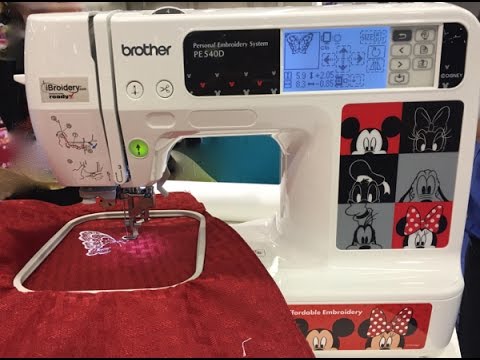There are many reasons why you may be interested in doing your sewing; maybe you’re tired of waiting for your significant other to sew up rips or maybe you’re a significant other that is trying to sew the tears up.
Whatever the reasons, you’ve discovered that there are sewing machines and sergers, and you want to know what the difference between the two is.

What is a Sewing Machine?
The basic definition of a sewing machine is a machine that binds fabric together. Since that definition also fits a Serger, I’m going to explain how they’re different from each other.
A sewing machine has one needle and one maybe two threads while you’re sewing. A sewing machine is also slower than a Serger. Sewing machines can also stitch on either side of the needle, and they have a longer neck then Sergers do.
- With a traditional sewing machine, you have to do prep work before you can sew the fabric together. A Serger takes some of that prep work out of sewing.
- A traditional sewing machine also uses a different stitch than a serger does, they use a topstitch instead of a lockstitch.
What is a Serger?
A Serger is a specialized sewing machine. It can cut your fabric as you’re sewing, making it both easier and harder if you’re not experienced with it.
A Serger uses a lockstitch which is considered a more durable stitch. The lockstitch is created using 3-4 different threads. You see this by how many bobbins are on a Serger. Sergers have 3-5 bobbins on them to create a different kind of stitches. Manuali utente.
- Sergers are also a lot faster than a standard sewing machine and have short necks. Another difference is you can only stitch on the left side of the needle with a Serger.
- Sergers specialize in seams, especially seams that won’t fall apart very quickly. Sergers have many threads and what some of those threads do is a lock over the stitches, keeping the seam in place.
They also loop over the fabric which helps prevent fraying. That’s why a Serger has the knife, is so the threads can bend correctly and help keep the fabric from fraying.
Why Both Machines?
By this point in time, you’re wondering why do I want or maybe need both machines? Both machines can do the same basic function; the differences come into the fine work.
For example, a sewing machine does very well on buttonholes and zippers, which a Serger can’t do very well if at all.
What a Serger does very well is created seams that are professional and durable quality. The seams on most T-Shirts are Serged seams. Knitted fabrics or stretchy fabric does much better with a Serger because seams made with a Serger have more stretch to them.
The extra stretch in the Serger seams makes stretchy, and knitted fabrics lay right. If the seam is too tight, the fabric will wrinkle and won’t hang right when it’s worn.
A Serger also helps prevent fraying because the edges are trimmed as you sew the seam. Sergers also do very well when seaming easily stretchable material without stretching the material in weird ways. This is why you’ll see Serged seams on all knitted materials.
Conclusion
Sergers are good machines to have, especially if you’re doing a lot of sewing. They’re faster and create a sturdier seam then a traditional sewing machine does.
However Sergers are more expensive, so if you’re only looking into sewing as a hobby, I wouldn’t recommend getting a Serger and a sewing machine. A sewing machine can do the same kind of job that a Serger can, so a Serger isn’t needed to sew as a hobby.
If you sew a lot, and you need a heavier duty seam, a Serger is a must for you. Sergers are used to create the professional grade seams we see in store bought clothes.
If you’re a professional and you’re looking to make your products look better, a Serger is a must have for you. Having those professional seams will make people trust your products more.
For someone who is sewing as a hobby, a good sewing machine is all you need. They’re easier to use and have a smaller learning curve since they’re designed for a wider audience.





